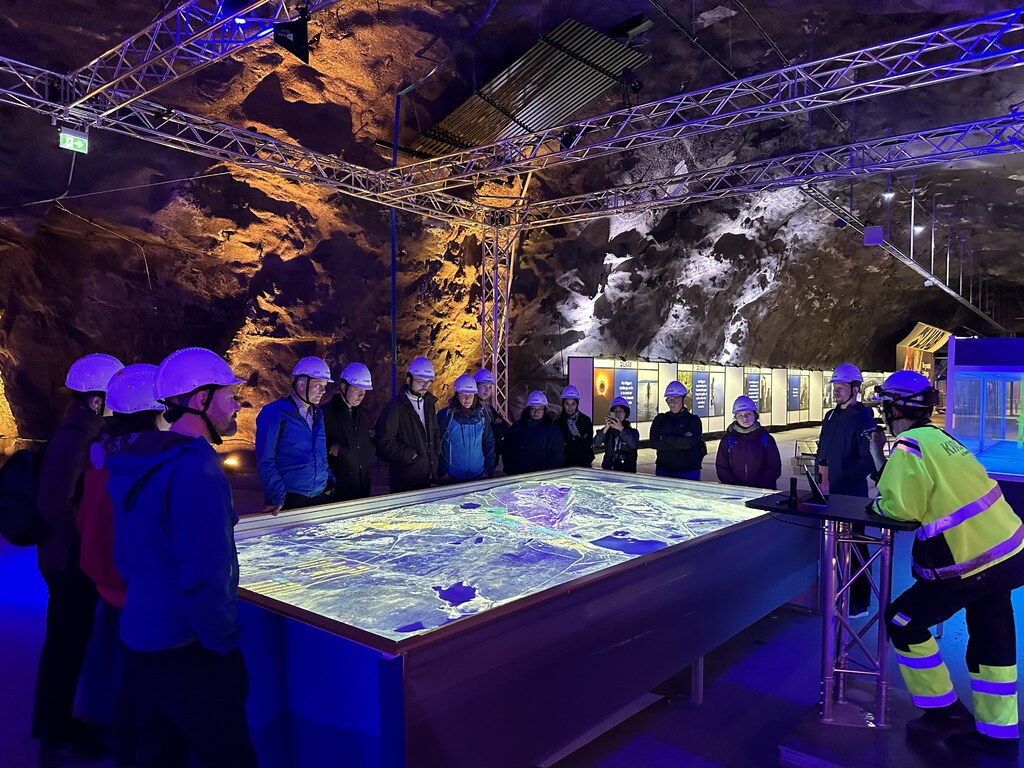
Following the Iron Ore Line towards a green energy transition
In the end of August, Nordic Energy Research had the pleasure of going to Northern Norway, Lapland, and North Bothnia. The purpose of the four-day trip was to get firsthand…
In the end of August, Nordic Energy Research had the pleasure of going to Northern Norway, Lapland, and North Bothnia. The purpose of the four-day trip was to get firsthand understanding about opportunities and challenges for a green energy transition in the Arctic region.
By traveling along the Iron Ore Line – a historic railway that runs through scenic landscapes from Narvik by the North Sea to Luleå by the Baltic Sea – the trip quite literally followed the tracks of green steel development. The Iron Ore Line transports most of the output from the iron ore mines in Kiruna, Svappavaara, and Malmberget to the ice-free Port of Narvik – a route named the Northern Circuit. This railway has supported the industry of Northern Norway and Sweden as well as the evolution of green iron and steel production – something that we would learn a great deal about during our days to come.
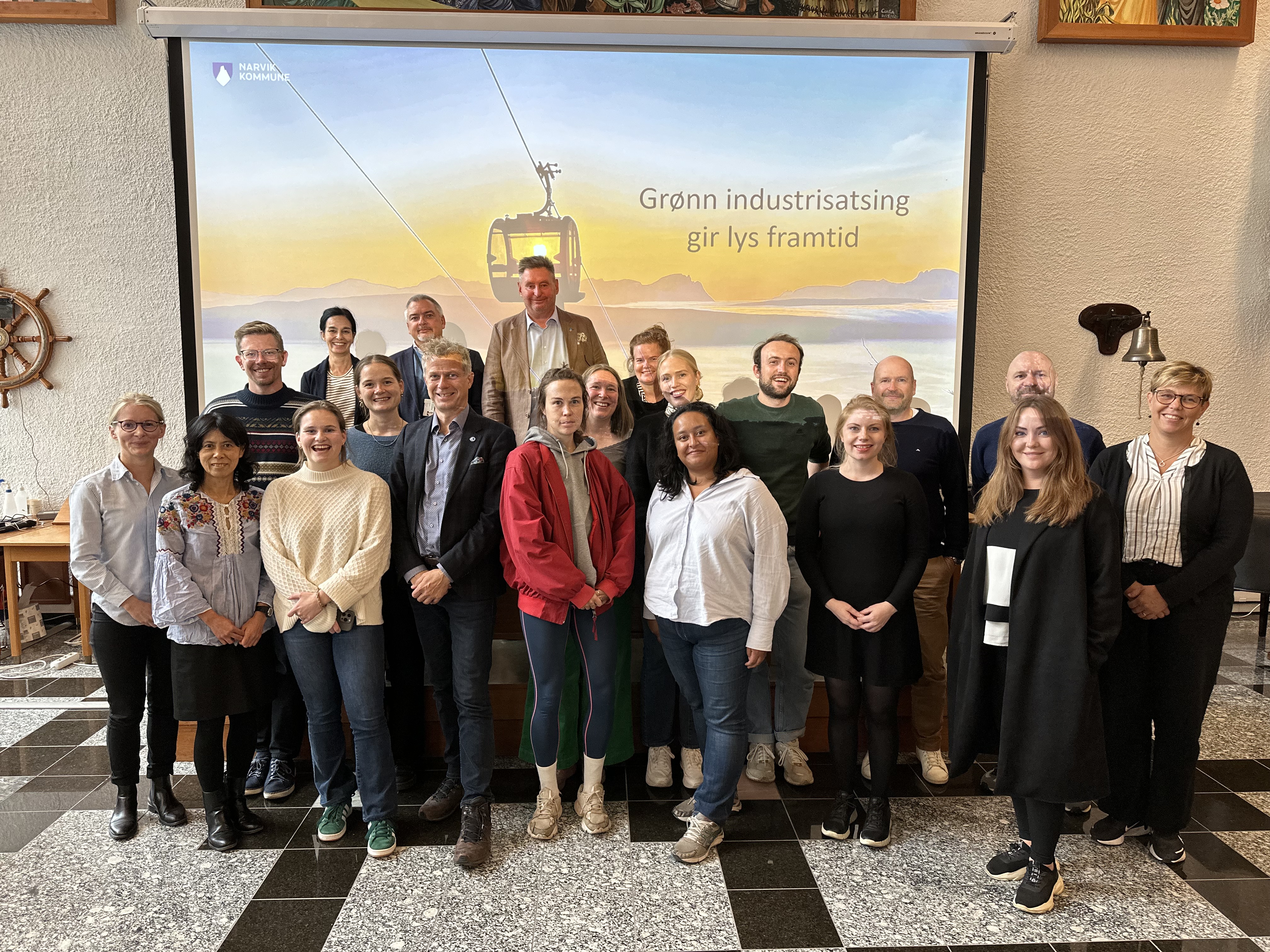
Nordic Energy Research at Narvik Town Hall.
Green initiatives for ammonia industry and hydrogen research
The tour started in Narvik, where we were introduced to the city’s energy plans and policies and their significance for the region. These energy-political insights provided context for the journey ahead, which continued to Kvandal. There, Raymond Wang, Project Engineer at Nordkraft, showed the development site for one of the first large-scale plants for green ammonia in Europe. The plant has a planned capacity of up to 600 MW and an expected production of 1,000–1,500 tonnes per day. The project aims to reach final investment decisions in 2025 and plans to start commercial operations in 2028.
The industrial site visit was followed by a stop to a more technological turf at the Arctic University of Norway (UiT) and their various laboratories. The university conducts significant research on renewable energy and the green transition, for instance through the Arctic Five – an alliance of Nordic universities that advance and share knowledge, education, and innovations for the development and sustainability of the Arctic. Except for UiT, the alliance consists of the University of Lapland, the University of Oulu, Umeå University, and Luleå University of Technology.
Luleå University of Technology was also one of the destinations on Nordic Energy Research’s travel plan. We visited the university during the Research Day of the Centre for Hydrogen Energy Systems Sweden (CH2ESS), which gathered researchers, industry partners, and students to explore the latest breakthroughs in hydrogen research, touching upon issues from energy systems and production to storage and safety.
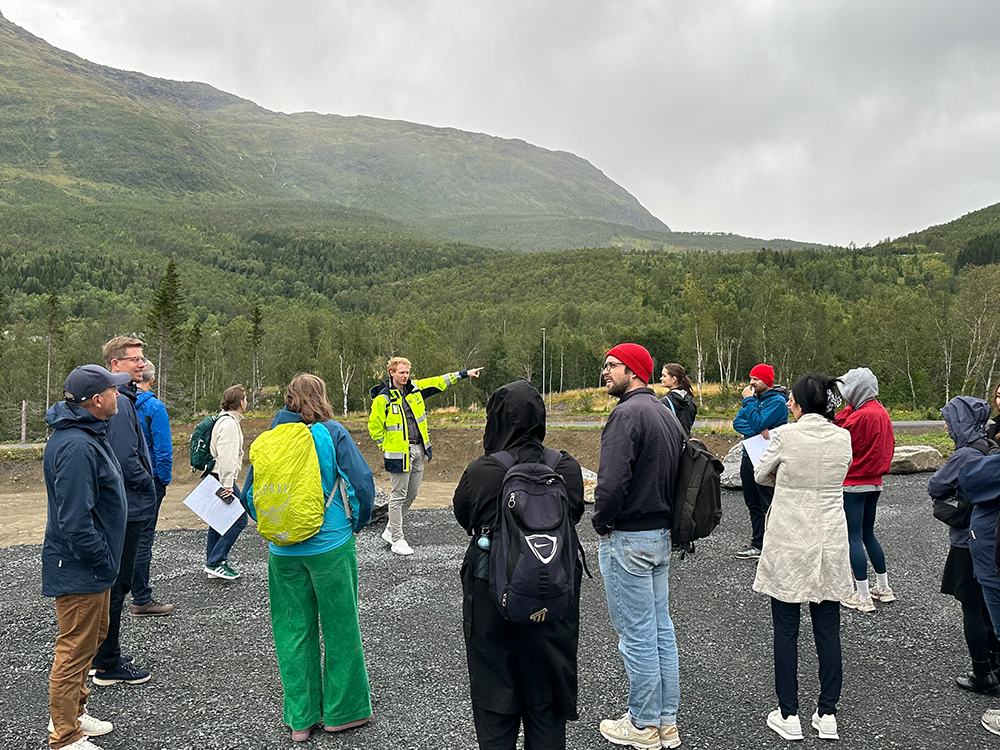
At the development site of Kvandal’s industrial plant.
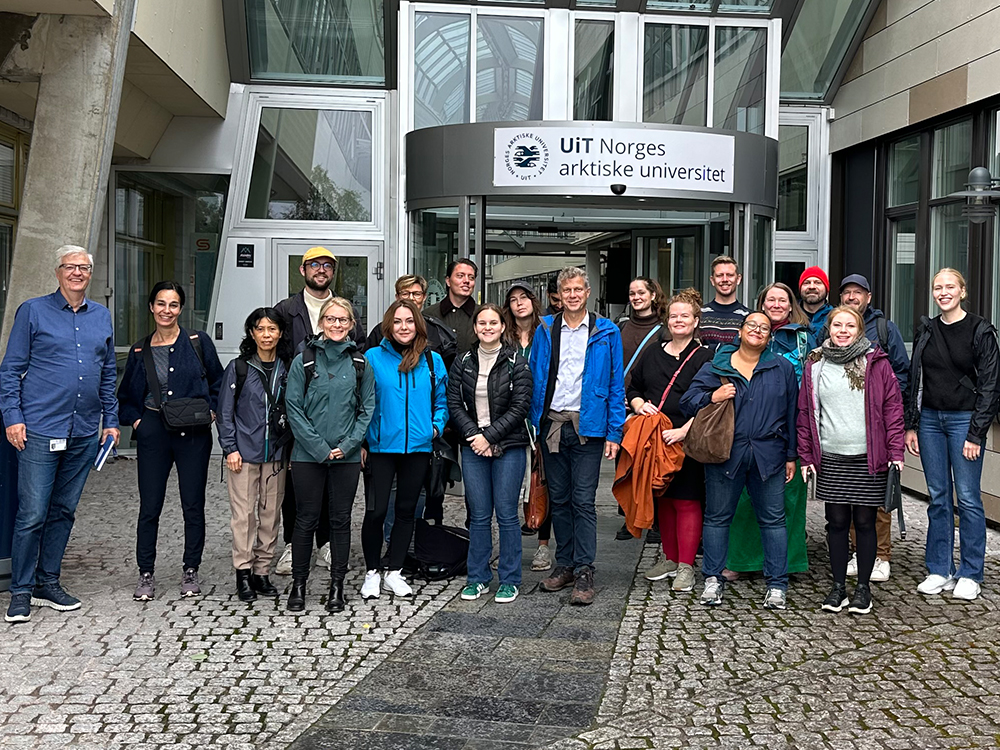
Outside the Arctic University of Norway.
Red hot green transition
The discussions during Luleå University of Technology’s Research Day made clear how hydrogen as an energy carrier plays a monumental role in enabling the green transition. For example, Joakim Lundgren, Professor at Luleå University of Technology and Project Manager of H2AMN, put focus on hydrogen via biomass gasification. According to Lundgren, this production pathway deserves more attention due to its beneficial properties, such as non-weather dependency and mitigation of the power demand.
“Green hydrogen demand is expected to skyrocket, especially for transport, industrial energy, and heating and power for buildings. And although producing biohydrogen via gasification is costly, the negative emissions from captured and stored CO2 also has value,” said Lundgren.
In addition, hydrogen has been key to the sustainable evolution of the steel industry – an industry that accounts for around 5% of CO2 emissions in the EU and 7% globally, making it one of the largest single industrial CO2 emitters in the world. However, by way of hydrogen-reduced fossil-free sponge iron, the Swedish mining company LKAB and steel manufacturer SSAB will contribute to reducing global CO2 emissions by as much as Sweden’s entire current emissions, thereby setting a new world standard for green iron and steel industry.
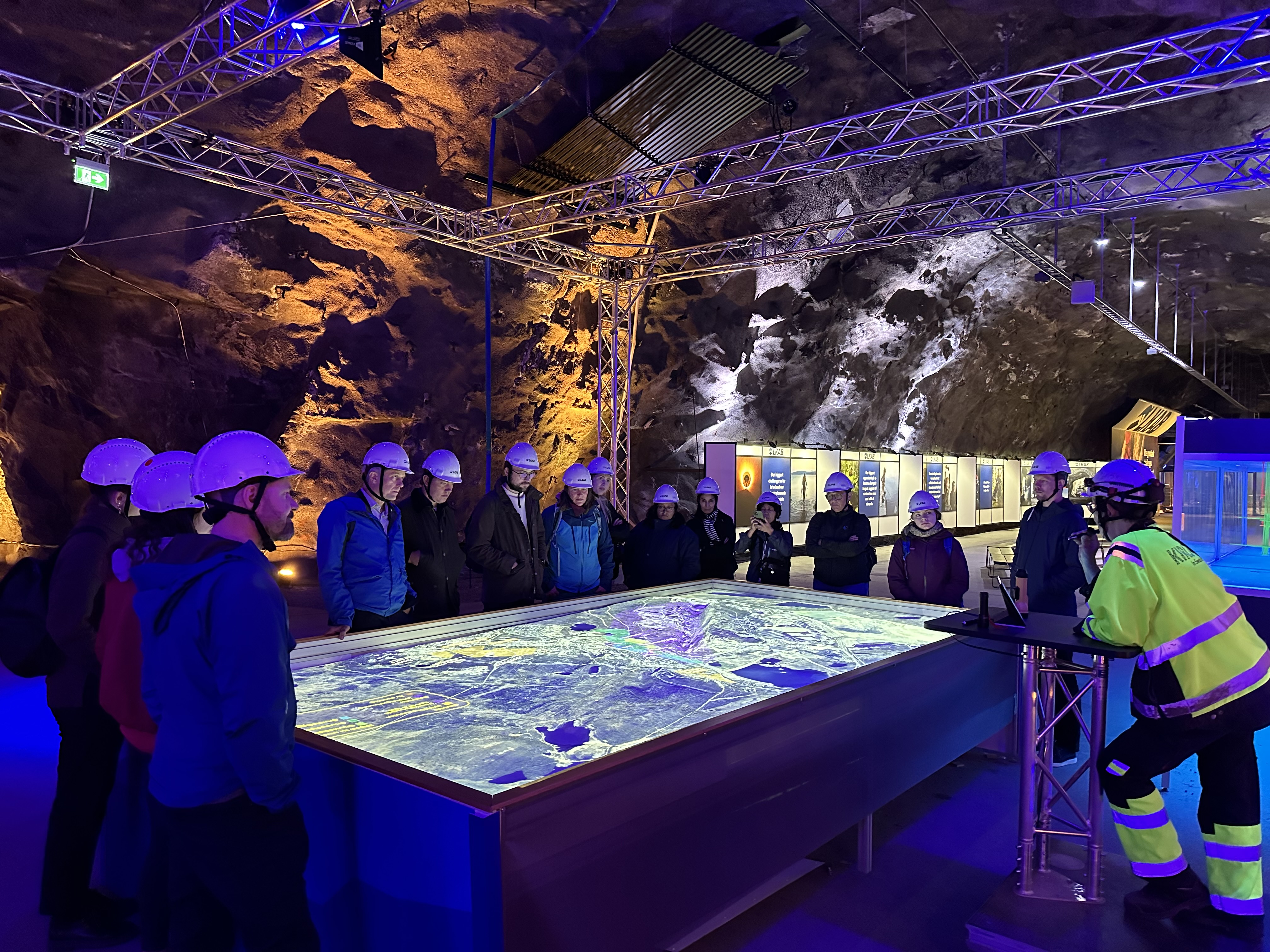
Inside LKAB’s mine in Kirunavaara.
Nordic Energy Research had the opportunity to visit LKAB’s mine in Kirunavaara, the largest and most modern underground iron ore mine in the world, where they extract enough iron ore to build the equivalent of 6.5 Eiffel Towers every day. All in all, LKAB mines as much as 80% of all iron ore in the EU, much of which is transported in the form of pellets and sinter fines to SSAB’s steel mill.
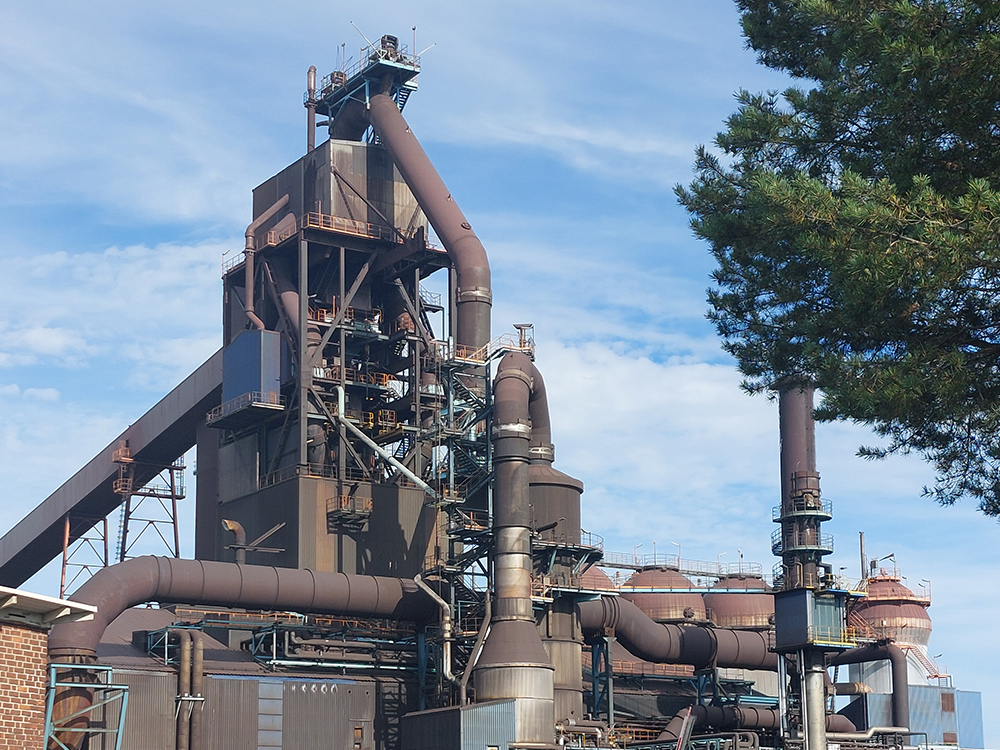
SSAB’s blast furnace in Luleå.
At SSAB, Nordic Energy Research got to delve even further into the technological and industrial transformation of steel production. With an annual steelmaking capacity of 8,8 million tonnes, SSAB accounts for 10% of CO2 emissions in Sweden and 7% in Finland. To tackle these footprints, SSAB plans to convert its current steel production in Luleå from a blast furnace and coke plant to a new integrated electric steel plant with an electric arc furnace, rolling mill, and further processing.
Nordic Energy Research would like to thank everyone involved for contributing to four days of enriching experiences! We look forward to seeing the progress of all interesting and important green energy activities in the north.

